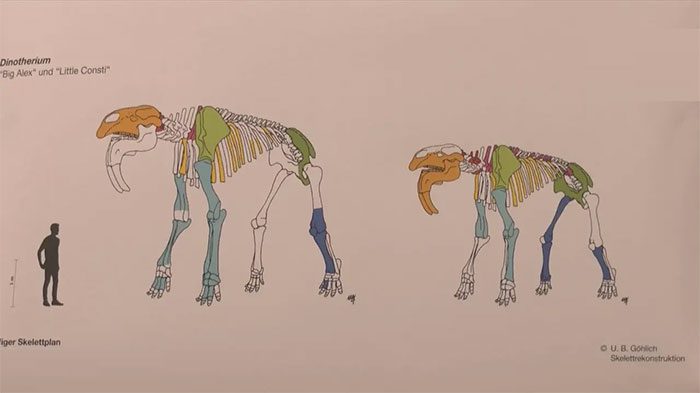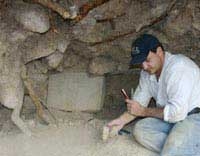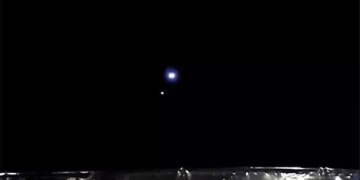Recently, a museum in Germany announced the discovery of skeletal remains belonging to the extinct prehistoric elephant species, Deinotherium.
Deinotherium is a genus within the family Deinotheriidae that once roamed the continents of Eurasia and Africa. This enormous creature existed between 12,000 and 10 million years ago, sharing a common ancestor with modern elephants and resembling them in appearance, except for its unique lower tusks that curved backward.

Deinotherium is a genus within the family Deinotheriidae.
According to Mr. Peter Kapustin, the Director of the Urzeit Prehistoric Museum in Taufkirchen, Germany, the specimens were discovered by his two sons a year prior. Initially, the boys found just a single bone. Following extensive excavations near a small village in Bavaria, located in the Erding district near Munich, a total of 120 bone fragments were unearthed. Among these, they identified the bones of one adult and one juvenile individual.
Mr. Kapustin believes that these skeletal remains belonged to elephants that once inhabited the outskirts of Munich. He noted that Deinotherium lived in Europe and Africa during the Middle Miocene to the early Late Miocene, and were among the largest of their kind, with adult heights reaching up to 5 meters and weights ranging from 8.8 to 12 tons, along with body lengths of about 7 meters. One of the most fascinating features of this species is its elongated and downward-curving lower jaw, which resulted in two backward-curving tusks approximately 1 meter long, unlike other elephants where tusks grow from the upper jaw.
Restoration expert Mr. Nils Knoetschke mentioned that some of the bone fragments were found in severely broken condition, requiring professional methods for restoration to excavate the skeleton intact.
This unique discovery is currently on display at the Urzeit Prehistoric Museum, managed by Mr. Peter Kapustin. In the near future, the museum plans to complete the restoration of the remaining bone fragments and present them for public exhibition.





















































